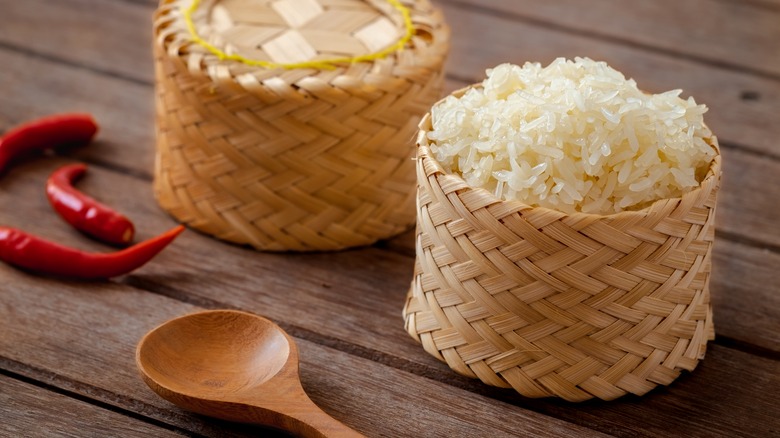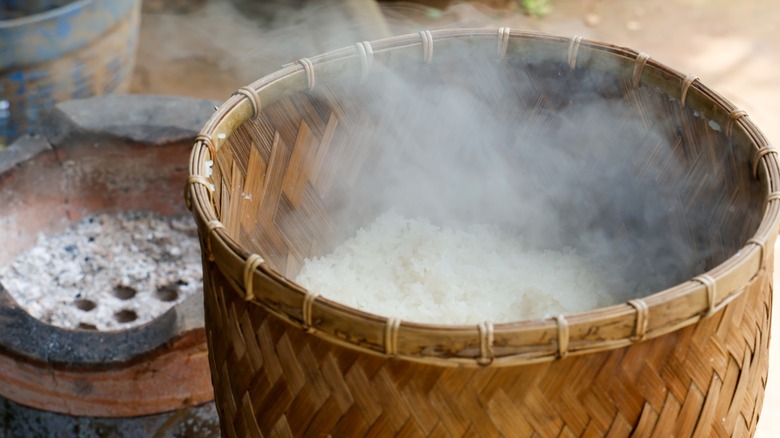What Makes Sticky Rice So ... Sticky?
Sticky rice, known also as "waxy rice" or "sweet rice," is a starchy grain that sticks together when cooked. While its name might make it seem like it's a varietal (like, say, basmati), it's actually a catch-all term, meant to denote that it's glutinous and that it, well, sticks — and in more ways than one, if you consider how ubiquitous it is, especially among various countries in Asia.
Laos is perhaps best known for its sticky rice, as it is the country's national dish, but this glutinous grain's reach spans far beyond Laotian borders. It's also an important staple in China; it's even mentioned in Chinese folk stories dating back more than 2,000 years ago. (Speaking of which, genetic research shows this glutinous grain originated somewhere around Southeast Asia, though it has since spread.)
As its name suggest, sticky rice seemingly glues itself (albeit deliciously) to everything it touches, from itself to other ingredients. But what makes it that way? Well, it's all thanks to something simple: a starch called amylopectin.
The science of sticky rice
Sticky rice is sticky because it has less amylose and more amylopectin, which helps cause stickiness. Amylose is water-insoluble, meaning it won't absorb water, while amylopectin will. High amylose levels lead to hard rice, which is a reason why sticky rice, which is lower in amylose, is generally softer.
The amylopectin found in glutinous rice becomes sticky as it cooks, due to starch gelatinization, in which starch swells to absorb water. This is why rice has to be steamed or cooked in hot water to become sticky, since water is required to cause gelatinization. Gelatinization doesn't just occur in rice, but in any starchy substance when heated with water. (This process is what makes pasta swell and soften when boiled, and it's what creates a gel-like texture in sauces and creams.)
Thanks to science and its sticky qualities, this glutinous grain has shown it has staying power, especially in a number of East Asian cuisines. Japanese sticky rice (also known as mochigome, or "mochi rice" in English) has a sweet flavor which makes it a common component in Japanese desserts like — you guessed it — mochi. Similarly, Thai sweet rice, also known as khao niao, is a big mainstay in Thai desserts. Thanks to its floral aroma and a longer grain, it complements popular ingredients like coconut milk, and fruits like durian and mango. (Mango sticky rice, anyone?).

